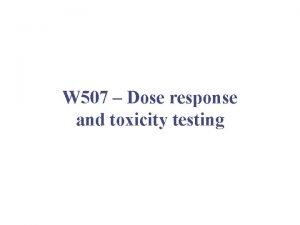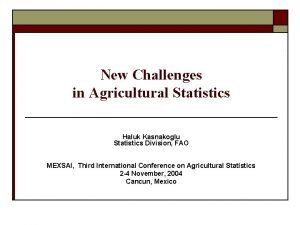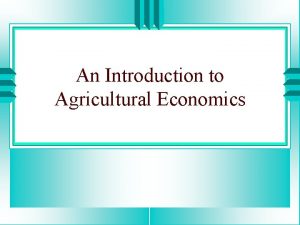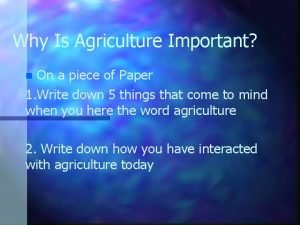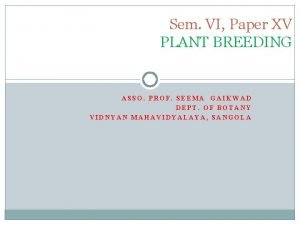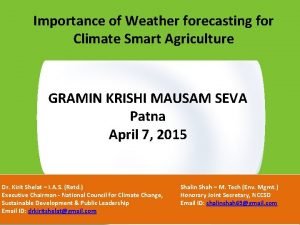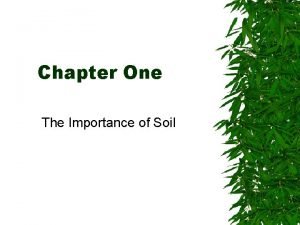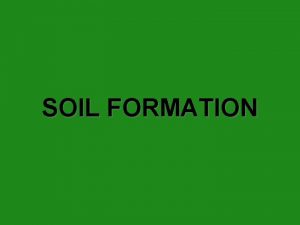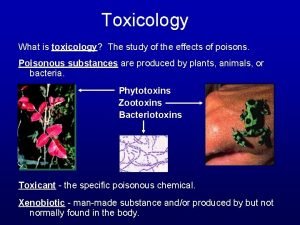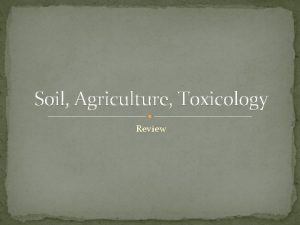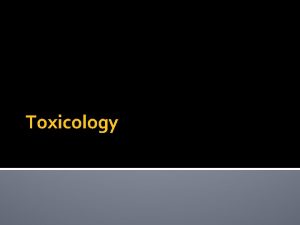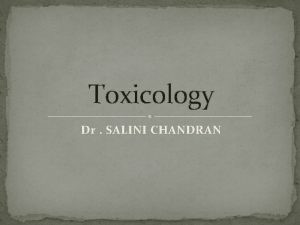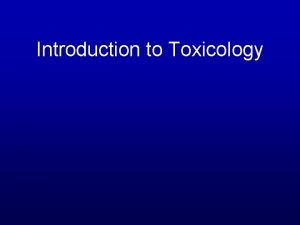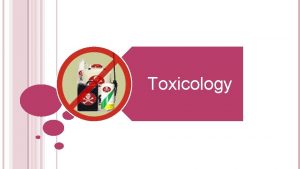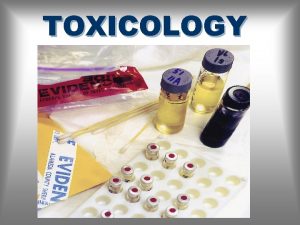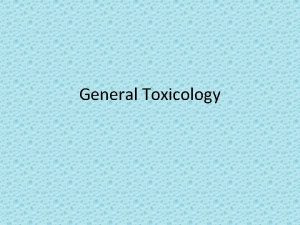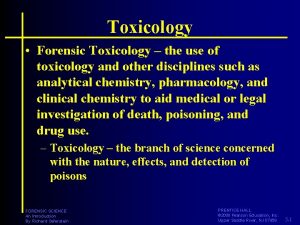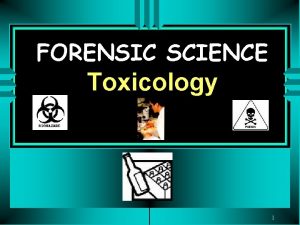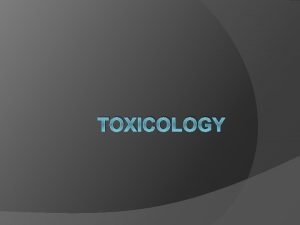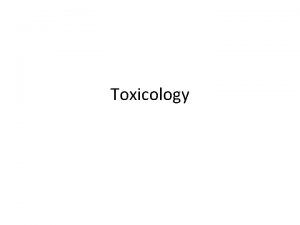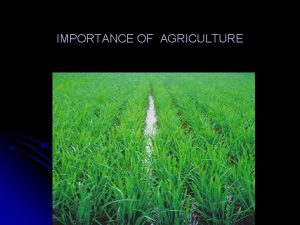Soil Agriculture Toxicology Review Soil Importance Function Medium


















- Slides: 18

Soil, Agriculture, Toxicology Review

Soil � Importance? � Function � Medium for plant growth, nutrient recycling, filters water, Habitat for bacteria, microbes, fungi, insects, animals � How formed � What is humus? � Breakdown of rocks/minerals from below � Deposition of organic matter from above � What factors influence formation and/or properties � Parent material � Climate � Topography � Organisms � Time

Soil � Particle size � sand, silt, clay �Soil Triangle � Which soil type is best for farming �Loam: 40/40/20 �What does color indicate � Chemical & Physical Qualities /properties: Chemical Physical p. H Porosity/permeability Nutrients: N, P, K Texture/feel Organic matter (humus) Composition: % sand, silt, clay Salinity (Salinization) Erosion Ion exchange capacity Compaction Heavy metals Profile analysis: depth of horizons Trace elements Color

Soil Profiles: Describe each horizon/layer Leaching Downward movement of water carrying dissolved minerals & organic matter

Soil Biomes �Describe soil in following biomes � Desert � Grassland/Praire � Tropical Rainforest � Taiga/Coniferous/Boreal/Evergreen forest � Deciduous/Temperate Forest

Hunger �Causes �Strategies to combat �Golden Rice �Main sources of calories worldwide �Increasing meat consumption �Maximize calories � Trophic level �Feed lots & Aquaculture � Benefits / problems

Agriculture � Describe, benefits, problems � Traditional / Subsistence farming � Industrial / Conventional farming � Organic Farming � Genetic diversity � Seed banks � Green Revolution � GMO � Pros / cons � Irrigation � Types, problems � Salinization � waterlog

Conservation �Conservation practices � Contour, terracing, strip, shelterbelt, cover crop, no till, polyculture, intercropping, agro forestry, crop rotation, buffer zones �Erosion �Desertification �Fertilizers � Organic / synthetic

Pest management � Pesticides � Benefits / problems � Resistance � Pesticide treadmill � Bioaccumlation / biomagnification � IPM � Describe / Goal � Rachel Carson � DDT � EPA � US Laws � FIFRA (Federal Insecticide, Fungicide, & Rodenticide Act) � FFDCA (Federal Food, Drug, & Cosmetic Act) � FQPA (Food Quality Protection Act) � Stockholm Convention � Dirty dozen

Hazards �Biological � Infectious diseases: � Species barrier • AIDS: tribesmen eating bush meat (chimps) • Mad Cow: feeding sheep parts to cows • Lyme disease - ticks • Hantavirus – mice/rats • swine/bird flu

Hazards �Chemical � Mutagens, carcinogens, teratogens, neurotoxins � Endocrine disrupters: BPA (bisphenol A, phthalates) �“Gender Benders” � Bhopal, India

Hazards �Cultural � smoking, poor diet, unsafe sex, drugs, unsafe working conditions, and poverty.

Toxicology �LD 50 �Risk – 75% Disease � Developed �cultural � Developing �Infectious � Overall �Poverty �Toxicity factors � Dose � Exposure � Genes / Sensitivity � Fat Soluble � Persistence � Children risk factor � Eat/breathe/drink more per body weight � Put stuff in mouth � Immature immune system � Antibiotic resistance � Synergistic / antagonistic

RISK ANALYSIS – World – cause of death

RISK ANALYSIS – US – cause of death

Probability of death in the US

Actual cause of death in the US Suicide

Reduce Disease �Both infectious & cultural � Reduce poverty � Slow pop growth � Improved nutrition � Reduce pollution: air/water/soil � Reduce overuse of antibiotics � Vaccinations � Clean water � Hand washing/hygiene
 Acute toxicity
Acute toxicity Annual review of pharmacology and toxicology
Annual review of pharmacology and toxicology Cold media
Cold media Vydj
Vydj Hunters and gatherers
Hunters and gatherers 10 importance of agriculture
10 importance of agriculture Agricultural economics importance
Agricultural economics importance What is the importance of agriculture
What is the importance of agriculture A local tractor dealership is best described as an
A local tractor dealership is best described as an Objectives of plant breeding
Objectives of plant breeding Importance of weather and climate to agriculture
Importance of weather and climate to agriculture Living soil vs dead soil
Living soil vs dead soil Four major spheres of the earth
Four major spheres of the earth Importance of soil
Importance of soil Surface exploration
Surface exploration How is soil made
How is soil made Soil textural triangle practice exercises
Soil textural triangle practice exercises What are the 14 parts of a microscope and their functions?
What are the 14 parts of a microscope and their functions? Xenobiotics definition
Xenobiotics definition
